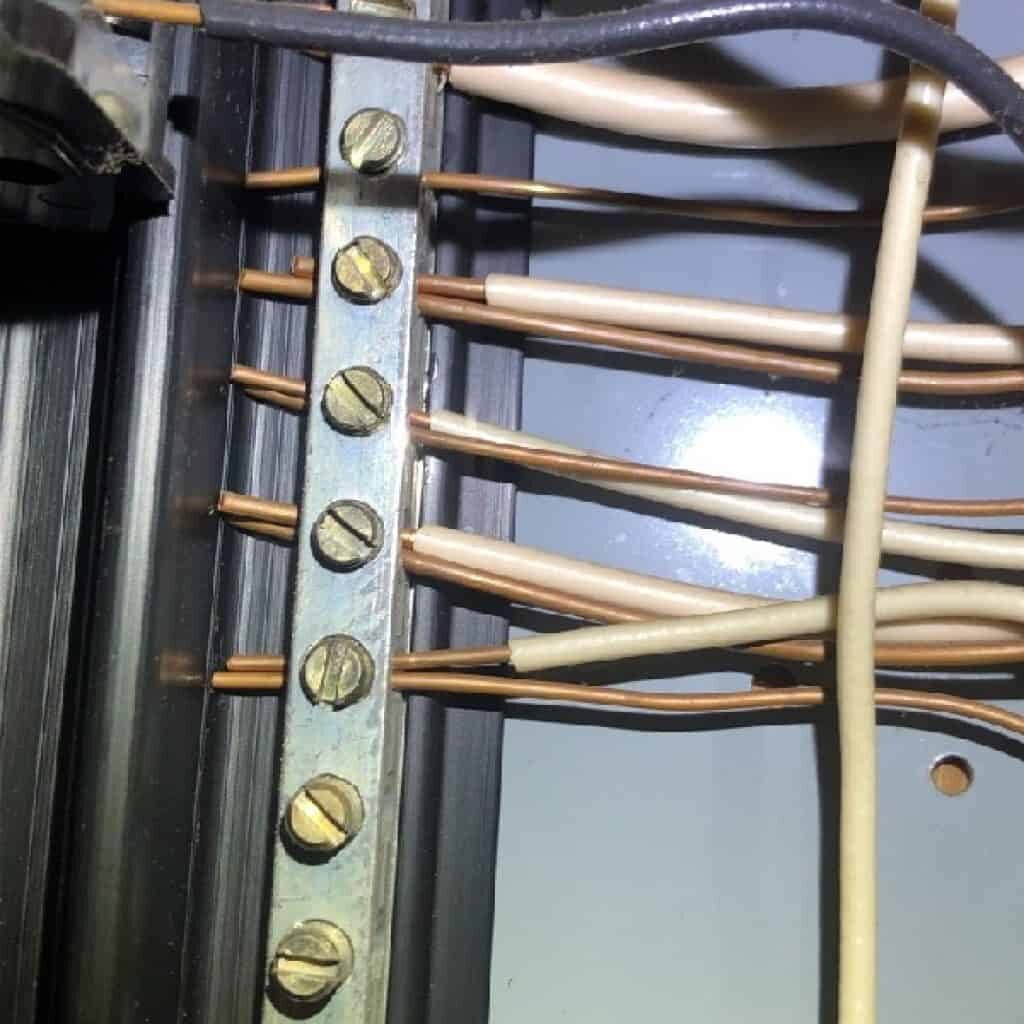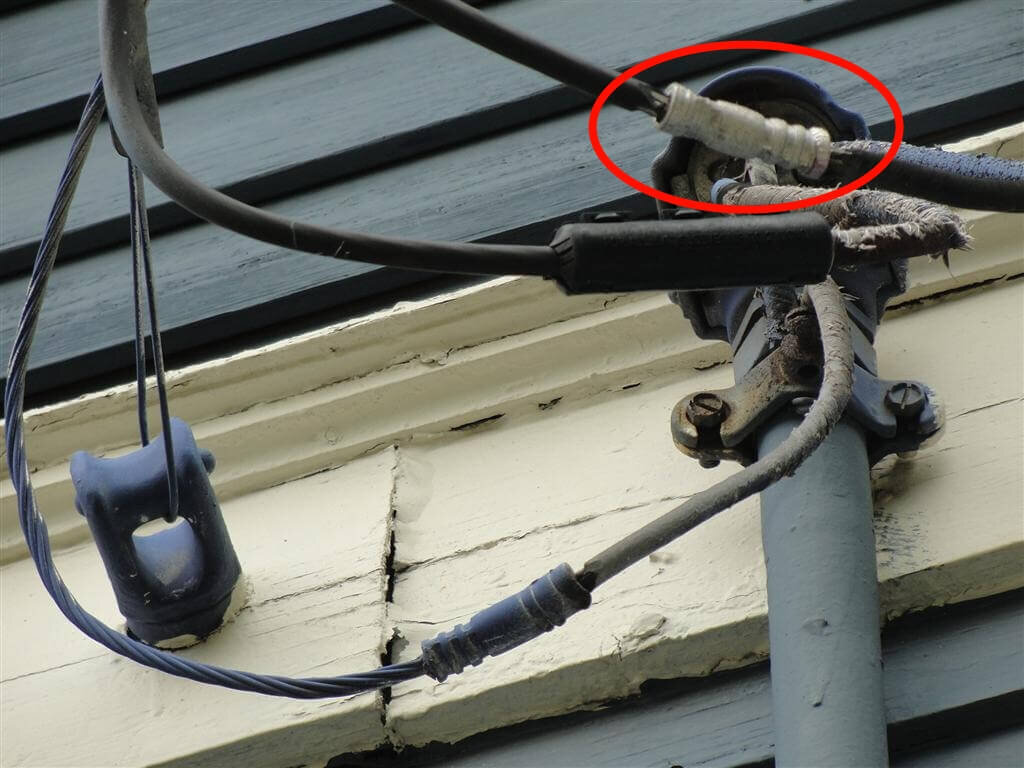What is Covered in an Electrical Home Inspection?
During your electrical system inspections, we will check for over current protections, grounding, and the presence of any aluminum wiring (a serious fire hazard and banned for many years in most states) during our electrical system inspections in your home for you. We remove the face of the electrical box if it is safe to do so
We also check a representative number of switches and outlets in the house and note the adequacy of smoke detectors. Some possible defects include poor clearance over roofs, driveways and walkways, poor connections, branches and vines, wiring and equipment damage, unsafe proximity to windows, balconies, decks, swimming pools and doors, and breaker panels (which indicate which circuits feed which rooms).
When electricity enters a home, the breaker panel gives the home inspector information about the system’s age, installation and adequacy for the home. Wiring leaves the box and routes its way throughout the home, feeding each room with one or more circuits that operate lighting, outlets, built-in systems such as HVAC and other fixtures. Some potential defects of the breaker panel may be poor connections, uncovered openings, unsafe or outdated breaker box, mislabeled or unlabeled breakers, and overheating evidence. The inspector will use some type of electrical tester to detect the different issues with your electrical system.
A home inspector also needs to determine the age of the wiring inside the home’s walls. Sometimes it is impossible to tell. There may potentially be physical damage, or in other cases, loose wire connections, abandoned wires, faulty outlets and switches, open wire splices, no ground wires or wrong wire gauge and other issues.
Many times, a home inspector will find double taps on breakers and the neutral bar, two wires under one breaker, and a neutral and ground under one screw. Another common issue is non manufacturer breakers in panels

Building Permits
PERMITS
In an effort to continue providing efficient processing of permits, please submit applications online using our ePermits system. The online system is available for most permits, including permits requiring plan review. Digital plans can be uploaded during the online application process.
Inspectors will continue to take precautionary measures by dressing in personal protective equipment. Both inspectors and person(s) on site are expected to continue practicing social distancing.
Permits and Inspections Division ensures that public safety and health standards related to building construction and land use are maintained for the general welfare of the community. This provides safety for everyone through proper construction methods and maintains neighborhood livability and property values.
will be adopting a digital plan review process for Commercial Permits. Required to be submitted with your application will be a digital copy of your plans along with two paper plans (please see the requirement checklist below for full details). Paper plans will be phased out over the course of the year. Permits can be applied for online with digital plans attached and plans dropped off or mailed in or all required documents submitted in person.
Building Inspections
Please note the following information as it relates to Building Inspections:
Inspections which require staff to pass through or enter an occupied space are suspended. These inspections will only be completed by photo or through our Virtual Inspection Process (VIP), using smartphone technology such as Skype or Facetime. No physical inspection will be conducted by staff except for life safety/structural issues.
Inspections of unoccupied structures or elements are still occurring but staff are encouraged to complete through our VIP. When a physical inspection is necessary they are to be performed unassisted. Staff must also practice social distancing and wearing PPE’s as referenced above.
The Office of Inspections is responsible for conducting inspections of building projects to ensure their compliance with the adopted county building codes. Our certified inspectors perform all building, mechanical, plumbing and site inspections.
Electrical Inspections
All electrical inspections are regulated by the State of Delaware
Inspections Section strives to provide accurate and consistent applications of the International Codes for our customers. However, from time to time an occasion will arise where we need input from the International Code Council (ICC) regarding a specific code section. In these cases, a request is sent to the ICC and a Staff Code Interpretation is provided in return. These impartial third-party decisions are receive from the ICC to assist jurisdictions in applying the code fairly and accurately.

Electrical Inspector Scheme
The inspection, testing and certification of electrical installations and equipment underpin electrical safety in all situations, at home and in the workplace. While government approved schemes focus on new installation work, much of the inspection and testing work is actually carried out to ensure ongoing safety
The scheme membership is tailored to the work you or your operatives do. The Electrical Inspector Scheme covers the production of Electrical Installation Condition Reports (EICR) in domestic, commercial and industrial buildings.
Legal Requirements – Employers, Duty holders and Landlords have obligations to ensure the electrical safety of systems and equipment inall types of installations, i.e Commercial, Industrial and domestic. These are stated in the Electricity at Work Regulations and Landlord and Tenant Act and other associated legislation. Competence is required by this legislation and the use of an independent registered inspector is often the most suitable way of ensuring compliance.
Qualifications – For Electrical Inspector scheme work you or your employees must have qualifications (or equivalent) covering core electrical installation, wiring regulations and periodic inspection and testing. Individuals who already meet these requirements via CPS, EAS or TPC scheme membership would be eligible to add EICR work.
Inspection – For Electrical Inspector scheme work you or your employees will have to have 3 reports evaluated for each building type in your scope (domestic, commercial, industrial) during your annual assessment visit.
HOW EIS RELATES TO CPS, EAS AND TPC
If you are registered under any of the schemes demonstrating electrical competence (CPS Full Scope Electrical, EAS or TPC) you will already meet most of the criteria for the Electrical Inspector Scheme. For Electrical Inspector work you or your opertative will need to verify that your qualifications are at a level covering periodic inspection and testing not just verification work
How To Inspect Your Own House, Part: Electrical
I wrote a blog post about homeowner maintenance inspections, wherein I promoted the virtues of having a home inspector conduct maintenance inspections on existing homes every five years or so. I promised to follow up with a post on how homeowners could conduct their own home inspections, but I don’t know what I was thinking when I said I’d follow up with a “post”.
I should have said I’d follow up with my longest “series” of posts ever. For the first part of this series, I covered the inspection of the exterior. I took a little break in this series because I had a few other things to discuss that were somewhat time sensitive, but I’m back on the homeowner inspection series again.
Today I’m going to cover electrical. There is a ridiculous amount of stuff that could be covered with this topic, and a lot of it takes a lot of explaining. I’m going to cover the stuff that takes the least amount of explaining and makes the biggest impact on safety.
Overhead Wires
If your home has overhead wires bringing in power, check to make sure there are no tree branches rubbing on the wires. It’s the homeowner’s responsibility to maintain / trim trees on the property that may interfere with the overhead wires coming from the utility pole to the house.
Also, take a close look at the connection point between the overhead wires right before they disappear into the mast head. One wire is the neutral wire; it’s normal for this wire to be exposed, but the other two wires shouldn’t have any exposed contacts. If there are, these are serious shock / electrocution hazards that should be repaired by the utility company. The photo below gives an example of an exposed ferrule at one of the hot wires. Touch that thing with an aluminum ladder, roof rake, or something similar, and it’ll be lights out for you.